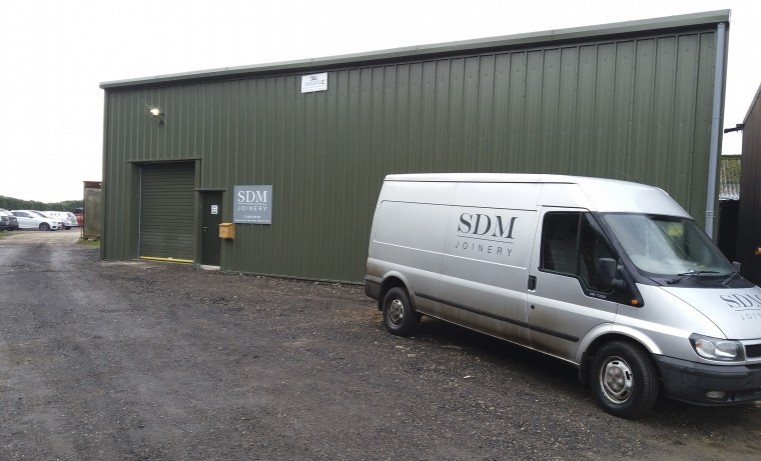When Tony and Jaci Foster moved to 225 acre Bunkers Hill Farm at Rotherwick in Hampshire in November 2007 there were no farm buildings.
There were some buildings measuring a total of 30,000 square feet, but they had been converted into industrial and warehouse units, 80% of which were let. The Fosters came with eight Aberdeen Angus cows and seven followers, which had to spend their first winter at Bunkers Hill in the open.
A new cattle house was urgently needed, and so the Fosters asked Shufflebottom of Cross Hands, Carmarthenshire, to design and build one. The building was constructed in spring 2008.
“This allowed us to increase to 20 breeding cows,” said Tony Foster. “In 2009 we installed a cattle handling system, designed by Bateman’s, at the end of the building. In 2010 we added another shed from Shufflebottom, facing the previous one. I checked at the time what space we should leave between the buildings so that if we wanted we could cover over the space by spanning from one building to the other in the future, and so a spanning building was built in 2016.”
Proper housing has enabled the Fosters to expand their prize winning Rotherwick herd to 40 breeding cows, with a total of 80 head of cattle overwintered inside. The complex is 32 metres by 38 metres with a central feed passage and has a lying area of 12 metres and a feeding area of five metres on each side. “We can easily move cattle between pens and to the cattle handling system via the central passage,” said Tony.
The farm has also grown to 300 acres by buying adjoining land and the addition of 25 rented acres. Water meadows of permanent pasture along the banks of the Whitewater river cover 45 acres, but most of the remaining 200 acres can be ploughed. “It’s used in rotation for growing new leys for silage and grazing, and for wheat and barley. We mill and mix some of the cereal for feed and sell the remainder. Cows are fed only silage and barley straw via a Teagle feeder, and youngstock have ad lib silage in ring feeders, and two kilograms of beef nuts per day from our local feed specialist, Gerald Shearing.”
The building complex is in use all year. When others in the herd are grazing outside, cows in the farm’s embryo transfer programme are inside for 12 weeks between May and July. Show cattle also spend time under cover. Hay and feeding straw are stored next to where they are used, and harvested cereals are dropped before being transported to storage off the farm.
The Fosters say, they have been repeat customers of Shufflebottom because of continuity, price simplicity, one stop service, and fitness for purpose. “We have had the same point of contact for ten years,” said Tony. “The price quoted is the one you pay, the erectors are excellent to deal with, and work extremely safely. The finished buildings look good and are fit for purpose.
“Covering the feed areas has made a huge difference, because all the feed is kept dry. Feeding areas are also dry so that instead of clearing out slurry twice a week, we only clean out half as much every two weeks. The cows keep a lot cleaner and we are using about 30% less straw.
“The design allows easy handling, which is important as there’s only Jaci and myself involved. We handle cattle frequently throughout the year – for TB testing, Hi Health blood screening, artificial insemination, weighing, scanning, and estimated breeding values (EBVs).”
The Fosters’ skills of herd management are vital to the performance of their cattle, which have Hi Heath status and are scanned annually for EBVs. About six bulls are sold annually, and sometimes cows. If any do not meet the full criteria for breeding stock, they are sold to ABP Food Group under the certified Aberdeen Angus scheme or the Tesco scheme, typically at a premium of about 40p a kilo.
The herd achieves success in the show ring too. In 2016 Rotherwick Isabella, a two year old heifer was unbeaten at the Surrey County Show and the New Forest and Hampshire County Show. “We exhibited only at these two shows,” said Tony.
The latest development at Bunkers Hill is also buildings related – the start of a programme to renovate or replace gradually the industrial buildings which monopolised the farm when the Fosters arrived. “One 600 square feet building, originally the farm workshop, was leaking and beyond repair,” said Tony. “We gained planning permission to demolish and replace it with a new 2,500 square feet building from Shuflebottom, which went up in 2016 and is already giving a yield of about 16% on the total project cost.”




